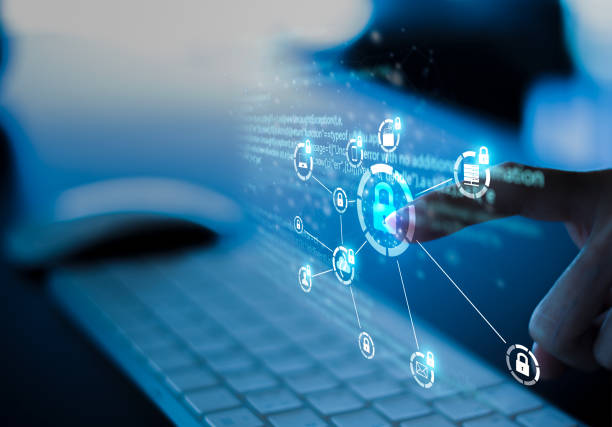Introduction
In our rapidly evolving digital world, keeping up with cybersecurity threats is akin to running a never-ending race. Just when you think you’re caught up, new challenges and methodologies emerge, pushing us to adapt continually. This post delves into some of the emerging cybersecurity trends slated to shape our digital defenses in 2024. We’ll explore innovations like AI in threat detection, the increasing reliance on cloud security, the critical role of cyber hygiene, ever-tightening regulatory changes, and the persistent threat posed by ransomware and phishing attacks.
1. The Rise of Artificial Intelligence in Threat Detection
Enhancement in Predictive Capabilities
Artificial Intelligence (AI) continues to be a game-changer in how we predict and manage cybersecurity threats. Thanks to advancements in machine learning, AI models are now more accurate than ever, making sense of patterns that would be unfathomable to human analysts. This improved precision leads to proactive threat detection, potentially saving companies from significant breaches.
Automated Response Systems
It’s not just about detecting threats; it’s also about responding to them swiftly. AI-driven security protocols work tirelessly to neutralize threats the moment they’re detected. Think of it as having an intelligent, always-on guard who acts instantly at the first sign of trouble.
Ethical and Privacy Considerations
However, with great power comes great responsibility. The integration of AI in cybersecurity brings up significant ethical and privacy considerations. Balancing enhanced security measures with individual privacy rights is tricky but essential. Regulatory frameworks are evolving to address these challenges, shaping how AI is ethically used in defending against digital threats.
2. Increasing Dependence on Cloud Security
Cloud Vulnerabilities
As more organizations migrate to the cloud, the target for potential attacks widens. We’ve seen high-profile cloud breaches in the news, teaching us hard lessons about vulnerabilities that exist and the ramifications they carry.
Strategies for Secure Cloud Migration
Migrating to the cloud securely involves meticulous planning and execution. It includes best practices such as implementing robust access controls, encryption, and regular security audits. Tools and services are available to fortify the security of cloud environments, proving invaluable for organizations making the shift.
Future of Hybrid Cloud Environments
The future is pointing towards hybrid cloud solutions, where organizations leverage both on-premises and cloud infrastructures. This model provides flexibility and security but requires a balanced approach to manage effectively.
3. The Importance of Cyber Hygiene in Personal and Professional Spaces
Individual Responsibility
Every one of us has a role to play in maintaining cyber hygiene. Simple actions like keeping software up to date and using strong, unique passwords can drastically reduce our vulnerability to attacks.
Corporate Cybersecurity Training
For businesses, cybersecurity is as much about technology as it is about people. Effective employee training programs are crucial. These programs not only educate staff about the risks but also about the actions they should take to mitigate these risks.
Emerging Tools and Technologies
New software and applications are continually being developed to assist in maintaining strong cyber hygiene. Moreover, as mobile devices become ubiquitous in our professional and personal lives, their role in cybersecurity is becoming more critical.
4. Regulatory Changes and Compliance Requirements
Global Data Protection Regulations
The landscape of global data protection is dynamic. Regulations such as the GDPR and CCPA are now well-established, but new regulations continue to emerge, requiring ongoing vigilance and adaptation from businesses.
Sector-Specific Implications
Different industries face unique cybersecurity challenges and regulatory requirements. For instance, the healthcare sector must protect sensitive patient data, while retail businesses need to secure payment information.
Tools for Compliance Management
Fortunately, there are technologies available that help streamline compliance management. These tools automate many of the tasks required to stay in line with regulations, thereby enhancing overall security.
5. The Persistent Threat of Ransomware and Phishing Attacks
Evolution of Ransomware Techniques
Ransomware attacks continue to evolve, becoming more sophisticated with each passing year. Staying informed about the latest attack techniques is crucial for developing effective defenses.
Phishing: Innovative Tactics
Similarly, phishing schemes have become remarkably sophisticated, often tailored to trick even the most vigilant individuals. Understanding these tactics and implementing preventative measures is key to guarding against them.
Building a Resilient Defense Against Financial Theft
Organizations must focus on building robust defenses to protect against financial threats from ransomware and phishing. This includes employing both technological solutions and strategic practices.
Conclusion
The landscape of cybersecurity is ever-changing, with new threats and solutions emerging continually. Staying informed and adaptable is not just advisable; it’s essential. As we look towards 2024, let’s embrace these technologies responsibly and ensure we are as secure in the digital world as we are in the physical one. Let’s not just defend; let’s predict and prevent.
FAQ Section
What is the most significant cybersecurity threat in 2024?
-
The rapid sophistication of AI-driven threats poses a significant challenge, making proactive defense mechanisms more crucial than ever.
How can small businesses effectively manage their cybersecurity needs?
-
Small businesses should focus on implementing robust, scalable security solutions and regular staff training to mitigate risks effectively.
What are some common mistakes companies make regarding cybersecurity?
-
Often, businesses underestimate the need for regular software updates and comprehensive employee training, leaving them vulnerable to attacks.
How often should cybersecurity training be conducted for employees?
-
Ideally, cybersecurity training should be an ongoing process with regular updates as threats evolve, at least bi-annually.
Where can individuals and businesses get reliable information about maintaining cyber hygiene?
-
Reputable sources include cybersecurity government websites, well-known cybersecurity firms’ blogs, and professional cybersecurity associations.



Leave A Comment